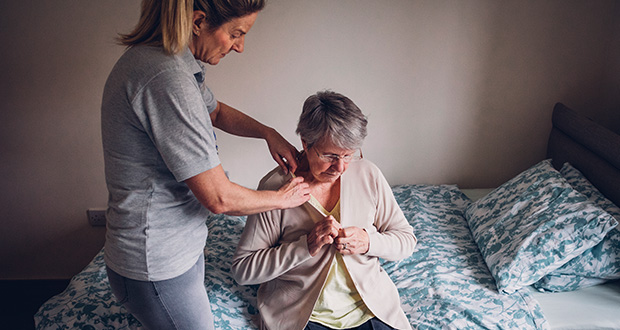Survey reveals why govt capped home care packages

A survey released last week has shed light on the reasoning behind the government's decision to cap home care package fees last year.
The federal enquiry came after claims of providers charging unnecessary fees of up to 60 per cent to raise profit and the Royal Commission's recommendation to improve provider accountability.
From 1 to 14 August 2022, the department's survey received 1,500 online responses from close to a thousand providers and over 250 care recipients.
Aged Care Minister Anika Wells announced November last year that care and package management charges would be capped at 20 per cent and 15 per cent depending on package levels from January 2023.
"We are acting quickly to remove the most excessive charges and putting downward pressure on prices," Wells said.
Seventy-five per cent of care recipients and carers in Australia said the average costs for care and package management are too high, according to the survey.
Over half also said they didn't know why they were charged for care or package management.
Providers expressed concerns that the capping of home care packages would impact their financial sustainability and negatively affect their quality of care.
They called for the government first to undertake a bottom-up study to learn where prices should be set before introducing significant price caps to packages.
"We need to retain some flexibility to adjust charges to reflect increases in their costs," providers said in the survey.
They also said the current home care package program needed 'significant IT changes to align with future home care reforms.'
Australia's aged care providers have been battling five years of financial losses due to skyrocketing inflation and increased costs to pay staff.
StewartBrown's latest report released earlier this month showed providers are continuing to operate at a loss of $21.29 per bed per day.
"The aged care sector, including residential aged care and home care, continues to have a significantly declining financial performance," the StewartBrown report said.
"Whilst much necessary focus has been directed toward important legislative and regulatory reforms, this has yet to transcend into improving the financial sustainability of the sector."
Home care providers are entitled to receive up to 17.5 per cent of the single-aged pension amount.
Yet, the accountancy firm pointed out that because of the suboptimal use of home care packages, there hasn't been a reason for providers to ask for a consumer contribution.
"A consumer contribution would merely add to the unspent funds, and a portion would eventually be returned to the care recipient when they leave the home care program," StewardBrown said.
"This has distorted the overall funding and, importantly, has created a climate whereby consumers do not regard co-contribution as a necessary component of aged care."
They recommend that providers charge a daily fee for home care packages and introduce mandatory care recipient contributions.
Email: [email protected]





